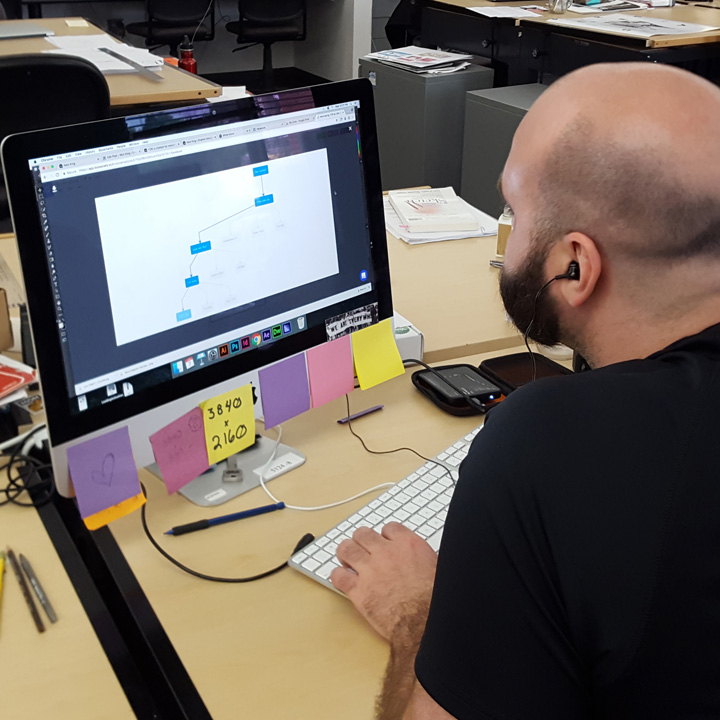TÜR: Chatbot for Messenger
Advertising / Branding / Digital / Illustration / Motion Graphics / User Experience

Navigate any city like a pro
In the burgeoning age of the chatbot, creating a conversational interaction that feels seamless is still a difficult task: specifically when receiving navigation instructions. The timing and wording can be awkward, and trust can be lost in an instant. What if there were a chatbot that tackled directional navigation for people who are unfamiliar with their surroundings?
Problem
Experiencing any city is best alongside a friend who lives there. Not everyone knows a local so their experience of any city is drastically lessoned without the aid of a local guide. Websites like TripAdvisor and Roadtripper only provide categorized points of interest (POI) that force a user to seek out information beforehand, and Google Maps only provides the quickest/fastest route to a single, preselected POI. How can a person experience an urban environment with which they are unfamiliar when they are traveling alone?
Goals
Create a system that mimics the experience of walking around a city with a friend who is a local. The system should seamlessly deliver both clear, easily understood navigation instructions whole also sending insider information about the places you pass along your route. This should instill confidence and trust while being agile enough to adjust the route on the fly given a user’s ever changing preferences and unforeseen needs.
Solution
A chatbot using conversational language and machine learning integrated with 3rd party POI databases. The chatbot should be agile enough to respond to new requests as well as reroute the user toward or away from relevant POIs through conversational interactions. These interactions should include both easy-to-follow walking navigation instructions as well as timely, relevant, consumable information about the user’s environment with the option to learn more.
My Roles
Research, concept, visual design, illustration, interaction design, prototyping, UX storytelling, motion design & animation
Tools
Adobe Illustrator, Adobe Photoshop, Adobe After Effects, BotSociety.io
Duration
5 weeks
Research
Chatbots are superior to apps. Apps have several hurdles to success:
- They are expensive to develop and maintain.
- Users need to download them from an app store which takes up space on their device and uses data and battery.
- Users are forced to learn and new interface, menu, and sometimes gestures mean different things on different apps depending on their developers.
- In order to use an app users have to leave other apps they might be using.
Conversely, Chatbots require no extra download because they integrate in with pre-existing messaging platforms. They don’t take up any extra space on your phone, use any additional data, or require any extra battery power to use.
Chatbots are increasing in popularity and with Facebook’s recent addition of bot-based chat platforms, the chatbot industry shows no sign of slowing.
The concept of an electronic tour guide is not unknown territory. Several apps exist that tout a “locals eye view experience” but most aren’t free to download and all carry the same struggles as I listed above. Today there does not exist a chatbot like TÜR.
About the Name
TÜR (pronounced like “tour”) is german for “door.” In creating this chatbot, I wanted to convey the feeling and excitement of exploration; when users open TÜR, I want them to feel like they’re opening a door into a new urban adventure.
Promotional + Explainer Video
Visual + Animation Style
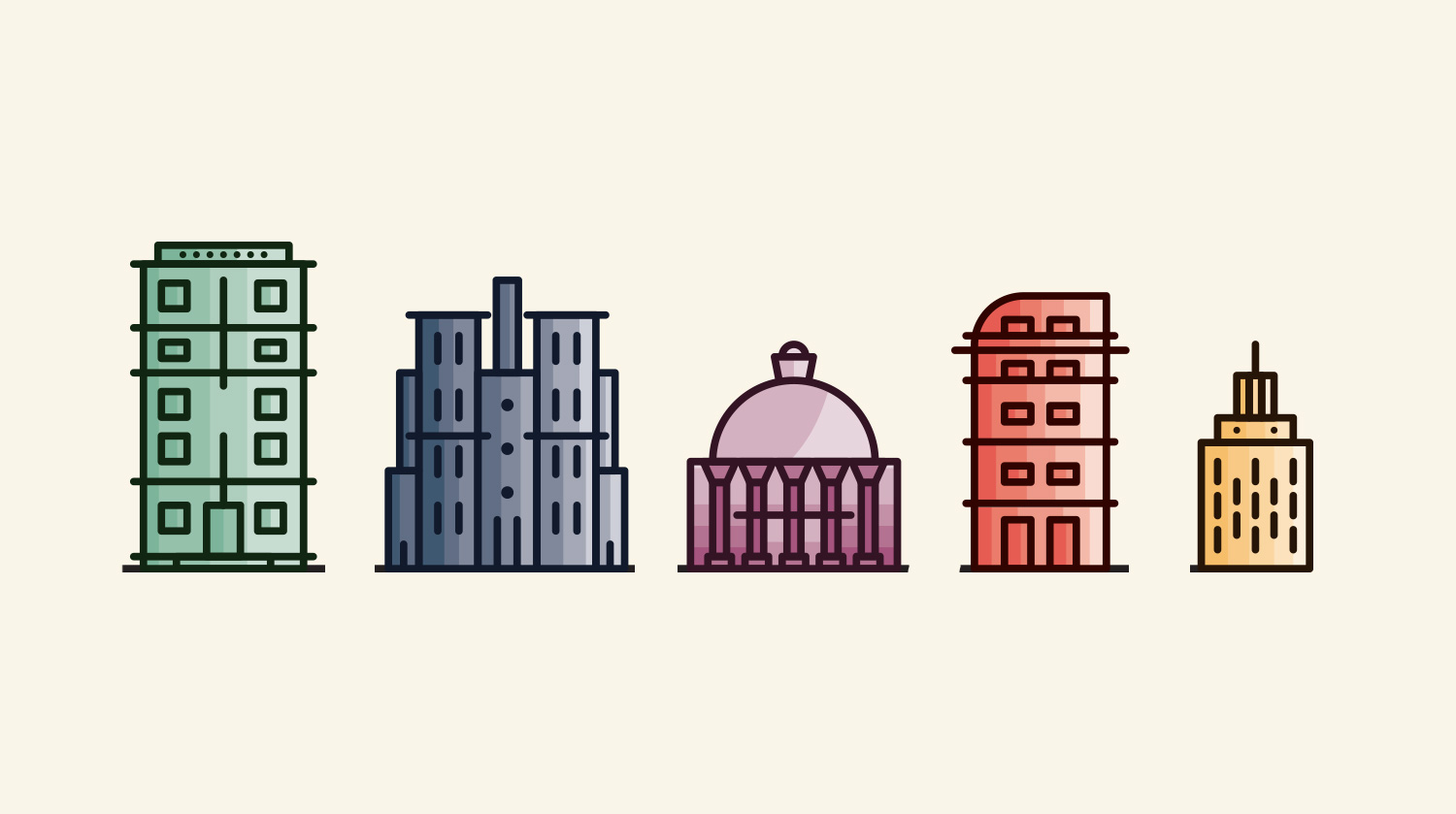


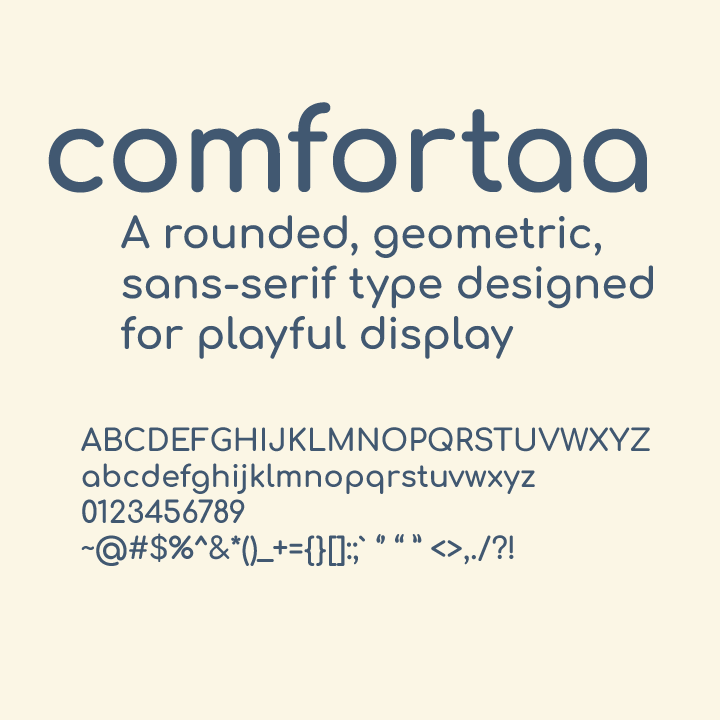
How It Works
Users
TÜR uses a combination of existing point of interest (POI) databases along with categorical metadata from sites like Google, Road Tripper, Yelp, Trip Advisor, and more to aggregate a robust set of cross-referenced, geographically accurate data points which can be analyzed against a users interactions (likes/dislikes, social media shares, request, and responses). This process allows an algorithm to precisely identify POIs that are most relevant to a user’s interests relative to any given geographical location and route. Since user-directed data is continually being collected, any given POIs adjust relevance in real time allowing for on-the-fly alterations during any TÜR.
The typical user of TÜR is globally adventurous and locally curious. They love to travel to and explore places they’ve never been, and are interested in learning about the world around them. They confidently navigate urban environments in seek of hidden gems and are always on the lookout for locals-only information.
- 20s-40s
- Highly active smartphone users
- Have used chatbots or adapt easily to new technology
Onboarding
When you first interact with TÜR you’ll be greeted in a friendly tone. This is by design. TÜR is intended to acting as a stand-in for a friend showing you around their city. Providing users with an casual yet approachable voice is important in not only establishing trust but to in upholding a conversational interaction as well.
The initial on-boarding process is short: Create a user-name. This allows TÜR to save user preferences for future navigating.
While succinct, these first interactions are crucial for establishing chat-based user interactions through the framework of a Messenger ChatBot. When TÜR requires a response from a user they are prompted with often-used or likely replies. These suggestive responses help grease the conversational wheels, so to speak, and help avoid any trusting-breaking awkwardness that might come up.
Initial interaction
A user initiates TÜR by making a simple request. This is done in natural language, as if speaking to a friend.
In order to best navigate a user, TÜR needs to collect 3 pieces of information:
- How LONG?
- defines the time a user has available.
- What do they want to DO?
- defines required activities during the route.
- What do they want to SEE?
- defines categorical interests that would be nice to encounter, but are not required.
Defining these pieces of information before setting out allows TÜR to curate a perfect route.
You’ll notice there are suggestive response bubbles after each question. These bubbles are based on several things including: current location, frequently/most used, and most popular. For example: if a city is known for having excellent coffee, TÜR will provide a suggestive response of “coffee” or “☕” when asking if there’s anything you want to DO.
Directions
Delivering clear, easily understood directions in casual language is a priority for TÜR. The ideal user experience instills confidence while maintaining a friendly tone.
TÜR first confirms the users location. This is done by accessing Facebook’s geo-locating database. Each message sent from Facebook Messenger contains specific location data. TÜR uses this data to monitor a users progress and dynamically make adjustments.
To further instill confidence, there are standard suggestive response bubbles during navigation that serve to help if a user gets off track.
Navigation instructions place ALL CAPS emphasis on important words: street names and directions. These words are most important while navigating and can be seen at a glance while walking.
Interesting facts or pieces of insider information are always sent with an accompanying street-level image and specific POI name. The suggestive response bubbles that accompany POIs allow for greater interaction with TÜR. Likes, dislikes, and tell-me-more responses all provide a layer of interest-data TÜR uses to learn more about a user’s preferences.
Tell-me-more offers another opportunity for users to learn about POIs and share these discoveries with their Facebook friends.
What’s Next send directions to the next POI.
This cycle of navigation instructions continues until the users reaches their final destination.
Interrupting
In an attempt to further mimmic the interactions a user would experience with a friend, TÜR can dynamically adjust a user’s route in real time based on new or different requests.
In the example to the right a user is mid-route and requests to be navigated to get coffee. TÜR searches using several guidelines:
- The location of the user
- The request
- The distance from the final destination
- The route direction orientation
- The time remaining
Using this data TÜR will suggest a location that is nearby, on the way, appropriate per the request. TÜR will send a Yelp or Google Reviews page to the user who can then view that page or, using the suggestive response bubbles, accept the suggested location, ask for another location, or cancel the initial request.
When a user arrives at a required location (established during the “what do you want to DO?” initial question) they will be asked to confirm their arrival. To continue the route, a user can simple press the Let’s Go suggestive response bubble.
Video Planning
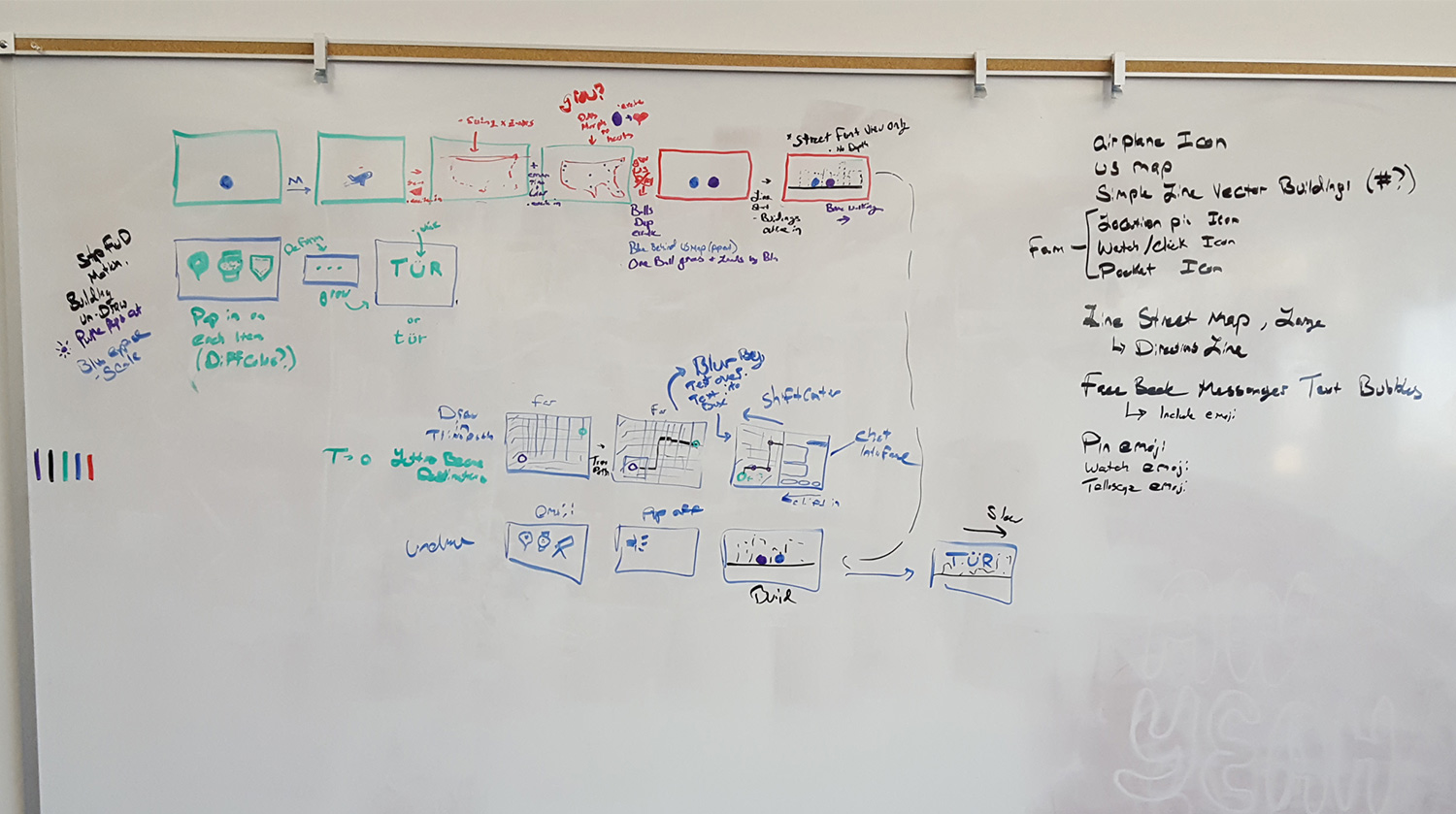
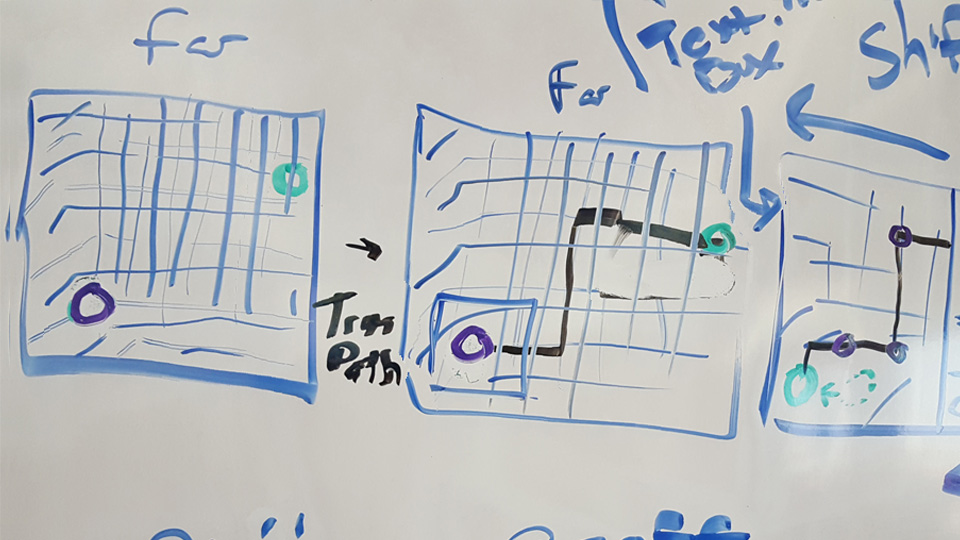
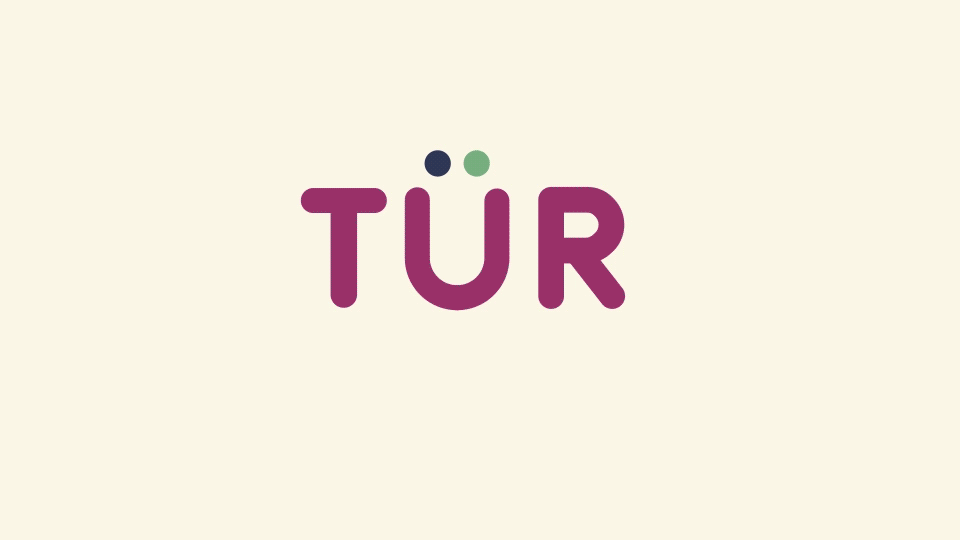
User Testing + Feedback
- Fun concept! I would totally use this!
- I wish I got some kind of trip report at the end. Maybe with a list of everything I saw a liked.
- Part of me think’s I’d want to use this with Google Maps. I don’t think I’d use it by itself. I like to actually SEE the map.
- Maybe include screen shots of a map and the direction I’m going?
- Cute idea! I’d be scared it’d get lost.
- I love how it talks to me. I literally feel like its responses from my friend!
- Can it read the messaged to me if I have my head phones in?
- What happens when you press I’m Lost?
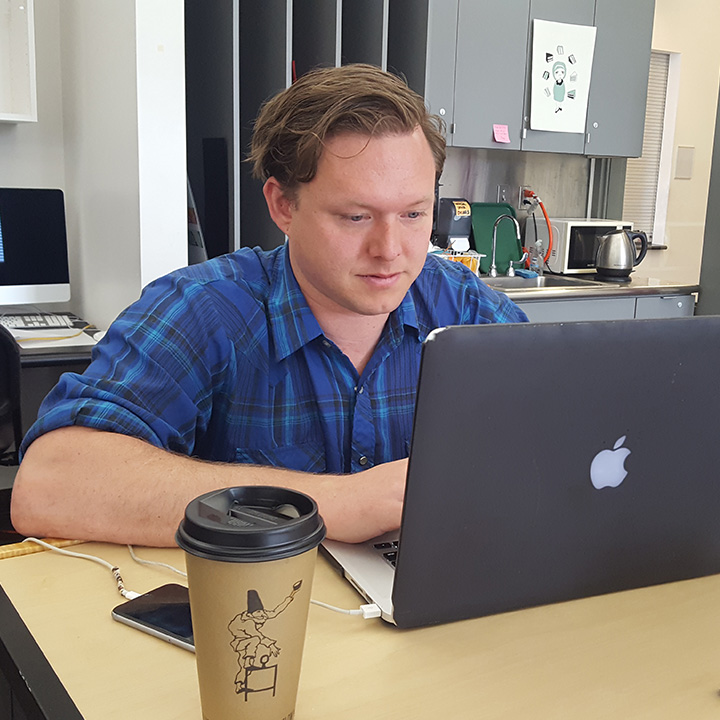
Conclusions and Moving Forward
Feedback from user testing shows some important conclusions and steps for moving forward:
- More information
- People require more information in order to feel comfortable and confident in the system and it’s navigation competence
- Adding a snippet of a map to show the user’s current location, the next POI, and the route they’ll be taking could help foster the level of confidence needed to trust the system
- Interactivity is important
- Having the ability to leave and return the chat is important when providing links (yelp, share, etc). Fully fleshing out that interaction is an important next step.
- Solution Ease if Confused
- To be able to “go back” and other natural ux navigation. Provide those in bubbles at every interaction
